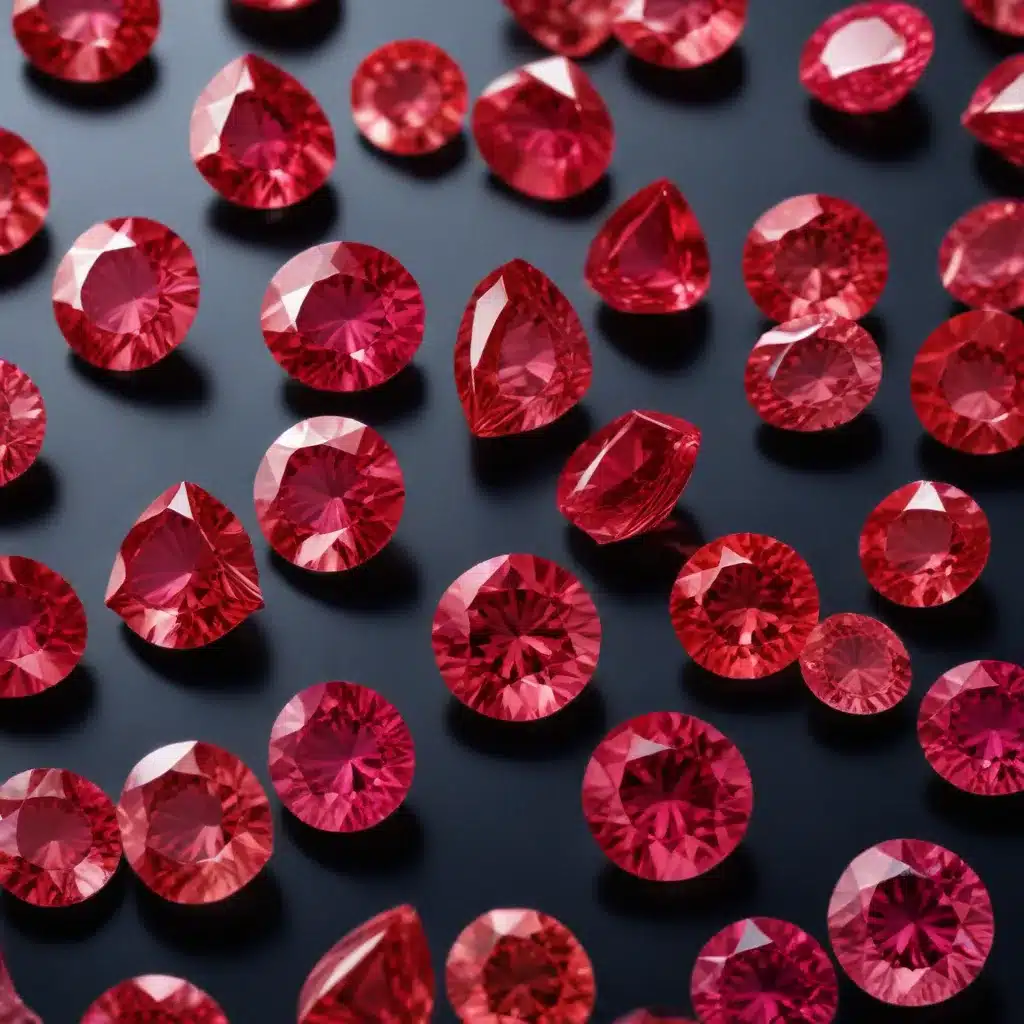
The captivating world of rubies has long enchanted gem enthusiasts and jewelry lovers alike. While these mesmerizing crimson-hued stones were once the exclusive domain of nature, the rise of synthetic gemstone production has opened up a new realm of possibilities.
At the heart of these lab-grown rubies lies a fascinating scientific story, one that delves into the intricate crystalline structures, advanced production techniques, and the factors that influence their vibrant hues.
The Crystalline Structure of Rubies
Rubies, both natural and synthetic, share a common atomic composition – they are composed primarily of aluminum oxide (Al2O3) with trace amounts of chromium. This chromium, present in parts per million, is what lends rubies their characteristic deep red color, acting as the essential chromophore.
The atoms in rubies are arranged in a highly ordered crystalline structure, specifically a trigonal corundum crystal system. This precise atomic arrangement, with chromium ions substituting for some of the aluminum ions, is what gives rubies their remarkable optical properties and durability.
Imperfections or defects within the crystal structure can also influence a ruby’s appearance and characteristics. Slight variations in the way the atoms are stacked, known as twinning, can create distinctive visual patterns. Similarly, inclusions of other minerals or gases trapped during growth can produce unique identifying features within the stone.
Synthetic Ruby Production Techniques
The ability to recreate the conditions that form natural rubies has been a long-standing goal of gemologists and materials scientists. Two primary methods have emerged as the most successful approaches for producing high-quality synthetic rubies: high-temperature melt growth and flux growth.
In the high-temperature melt growth method, pure aluminum oxide is melted at temperatures exceeding 2,000°C (3,632°F) and then slowly cooled to allow the ruby crystal to form. This process, known as the Verneuil technique, can yield large, single-crystal rubies with excellent clarity and color.
The flux growth method, on the other hand, utilizes a molten flux – a mixture of mineralized salts – to dissolve and recrystallize the aluminum oxide. This approach typically results in smaller, but more numerous, synthetic ruby crystals that can exhibit distinct growth patterns and inclusions.
The Optical Properties of Rubies
The exceptional optical properties of rubies are a key factor in their allure and value. Their high refractive index, around 1.77, gives them a brilliant luster and sparkle. Additionally, rubies exhibit strong dispersion, which causes white light to separate into its constituent colors, creating the famous “fire” effect.
The chromium content in rubies plays a vital role in determining their color. While nature provides a range of ruby hues, from pale pink to deep crimson, synthetic production allows for even greater control over the color. Factors such as the growth environment, temperature, and the addition of other trace elements can be carefully manipulated to produce rubies with a wide array of vibrant red shades.
Characterizing Lab-Grown Rubies
Distinguishing natural from synthetic rubies requires a multifaceted approach, incorporating both spectroscopic analysis and microscopic examination.
Spectroscopic techniques, such as UV-Vis absorption spectroscopy and Raman spectroscopy, can provide valuable insights into a ruby’s atomic structure and the presence of specific impurities or defects. These analyses can help identify the unique “fingerprint” of a synthetic ruby versus a natural counterpart.
Under the microscope, trained gemologists can detect distinctive growth features and inclusions that differentiate lab-grown rubies from their natural counterparts. Synthetic rubies may exhibit unique patterns, such as curved growth lines or gas bubbles, that are telltale signs of their man-made origin.
The Vibrant Hues of Synthetic Rubies
One of the most remarkable aspects of lab-grown rubies is the ability to fine-tune their color, allowing for the creation of hues that may exceed the range found in nature.
Color enhancement techniques, such as heat treatment and diffusion coating, can be employed to introduce or intensify specific chromophores, resulting in a wide spectrum of ruby shades. By carefully controlling the growth environment and the presence of trace elements, synthetic ruby producers can mimic the natural color variations or even produce entirely new and vibrant hues.
The precise control over the ruby growth process also enables the minimization of imperfections and inclusions, leading to highly eye-clean and flawless synthetic gems that rival the quality of the finest natural rubies.
Applications of Lab-Grown Rubies
The advancements in synthetic ruby production have had a profound impact on both the jewelry and industrial sectors. In the gem and jewelry market, lab-grown rubies offer a more affordable and readily available alternative to their natural counterparts, without compromising on quality or visual appeal.
Beyond the realm of jewelry, synthetic rubies have found widespread use in various technological applications. Their exceptional hardness, thermal conductivity, and optical properties make them invaluable in the production of laser systems, electronic components, and high-performance abrasives.
As the science of lab-grown ruby production continues to evolve, the possibilities for these captivating gems continue to expand. From the intricate crystalline structures to the masterful control over color and clarity, the synthetic ruby showcases the remarkable capabilities of modern materials science and gemology.
For those seeking the timeless allure of rubies, whether for personal adornment or industrial applications, the world of lab-grown gems offers a fascinating and accessible window into the science behind these mesmerizing crimson wonders. To explore the full spectrum of synthetic rubies and their applications, visit Shelby Gem Factory – your destination for the latest insights and innovations in the world of gem science.

